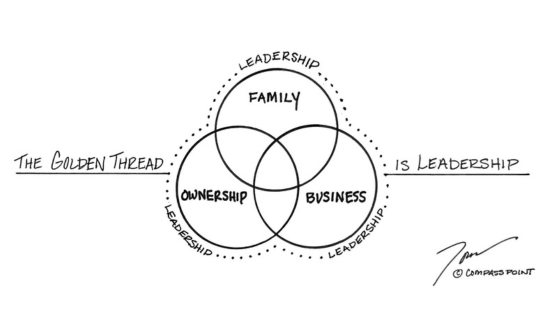FAMILY DYNAMICS / GOVERNANCE
Distress on the highway of life & business

Distress on a business.
While the internal impact of distress is both financial and emotional, the source of distress is most often caused by external factors – coming out of nowhere and out of our control, making it the hardest of the 5Ds to prepare for.
A very real and current example of this is the COVID-19 pandemic. It was a stress test like no other. Clearly, this was on no one’s radar nor was it accounted for on their 1-page strategic plan. Yet this event has caused immense distress to just about every business across the globe.
Having a plan to operate a business in times of distress reminds me of how an accident on the highway impacts traffic.
When there is a major accident on the highway, it brings the traffic around it to a screeching halt while emergency teams are called in to clean up the chaos. Miles away, however, a driver is unaware of the actual accident, yet they feel the ripple effect of it when traffic slows to a crawl for seemingly no reason. In a few hours, the ripple effects diminish, traffic begins to clear and all returns to normal highway speeds. (If only COVID had been the equivalent of a 3-hour delay.)
COVID blindsided the world sending us into a tailspin and lockdown. A complete stop. Decisions had to be made in the midst of uncertainty. How do we survive? Can we keep our business open?
The impact has lasted longer than anyone imagined:
Different variants creating wave after wave of uncertainty
Closings and lockdowns – weeks turned into months, then into years
The effects of a disrupted supply chain are now amplified
Worker shortages in just about every industry
Travel and events stuttered to begin in earnest again
Inflation bubbled up, hitting hard in December 2021 (and still climbing)
The list goes on…
The “clean up” of this pandemic has many people taking a harder look at what they want out of life and what they are willing to do to get it:
Employees learned new ways of working
Employers questioned their long-held business models
It kicked off the Great Resignation
Wages climbed to new highs to get/keep people
In times of distress, it is hard to make sound long-term decisions, especially when you do not know how long the distress will last. Just like that highway example, you don’t know the extent of the accident or its ripple effect, so you are left wondering.
Do I sit still and wait, or do I get off at the next exit to find another path?
We all tried to make the best decisions possible to keep the business open, but after months and now years of this, some businesses are left with Band-Aids on Band-Aids on top of duct tape.
It’s time to look under the hood and reassess the inner workings of your business:
Perhaps it’s time to amend outdated policies and procedures
Or write new ones based on your newly acquired “distress” experience
Review leadership roles and responsibilities
Are the right people in the right seats?
Has the Strategic Plan been updated in the last 2 years?
Is there Governance in place?
How about an Emergency Management Plan?
The best advice… Never bury your head in the sand and hope it will simply pass. Instead, stay vigilant in front of distress by remaining alert to the gaps in your operations, your people, and your innovation.
We have all learned that those gaps tend to hide until distress shows up and delivers a worst-case scenario. The last two years certainly have given that phrase new meaning.
Will you be ready for the next one?
Need a sounding board for the readiness of your Emergency Management Plan or other critical business documents? Schedule a 30-minute call to get your questions answered.
You may also like…

BLOG | LEADERSHIP
The Multiplier That Makes Businesses Grow
If your leadership team isn’t strong, aligned, and equipped with the right tools, how can they bring your strategy to life? The short answer: they can’t. But the good news? You can change that with this critical ingredient.
Read More
BLOG | LEADERSHIP
The Golden Thread that Binds Family, Business, and Ownership
The most successful family businesses don’t leave leadership development to chance. They recognize that leadership isn’t just about a single person at the top – it’s about building a system that supports leadership at every level – and through each of the 3 domains of a family business. It truly IS the golden thread that binds.
Read More
BLOG | TRANSITION / SUCCESSION
From Empires to Enterprises: Succession strategies that make or break legacies
History provides us the benefit of hindsight and powerful lessons. Take Genghis Khan and Alexander the Great, both great conquerors. Yet one implemented a structured succession plan that ensured the survival and expansion of his empire, while the other's failure to do so led to the disintegration of his vast holdings shortly after his death. A strong succession planning is the ultimate competitive advantage.
Read MoreWhere Family Businesses Come to Grow & Learn
At Compass Point, we make it easy to get insights, training, tools, and articles straight to your inbox and help family business owners and their team continue to grow, learn, and lead.

